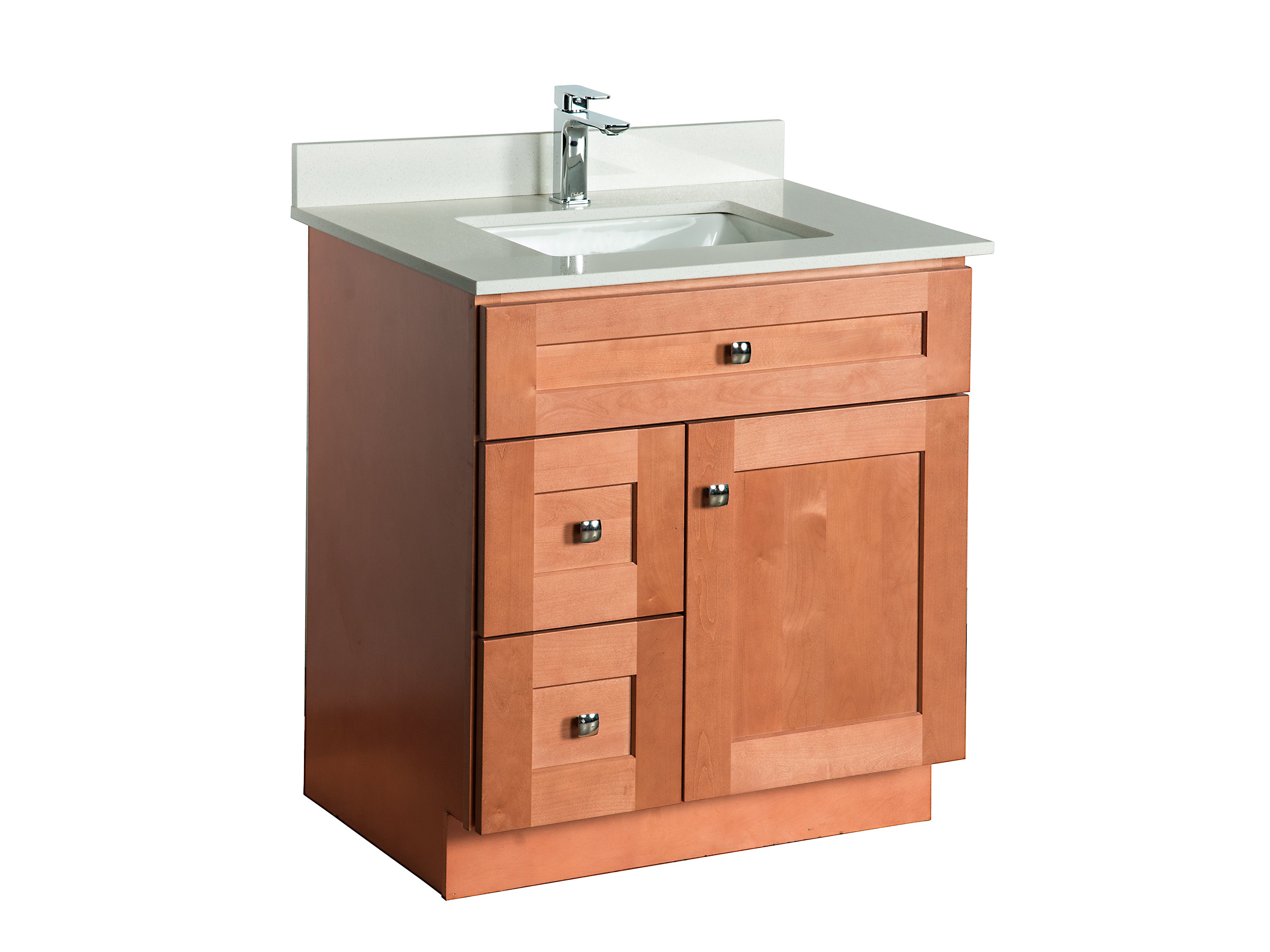Types of 30 Inch Bathroom Vanity Tops

Choosing the right vanity top for your bathroom is crucial. Not only does it influence the overall aesthetic, but it also impacts the functionality and durability of your vanity. With a 30-inch vanity, you have a range of materials and designs to choose from. This article explores popular options and helps you decide what best suits your needs.
Types of 30 Inch Bathroom Vanity Tops
The type of material you choose for your 30-inch vanity top will determine its look, durability, and maintenance requirements. Here are some popular choices:
- Granite: A natural stone known for its durability and unique patterns. It is heat and scratch-resistant, making it a practical choice for busy bathrooms. However, granite is porous and requires sealing to prevent stains. It’s also one of the pricier options.
- Quartz: An engineered stone that combines natural quartz with resins and pigments. Quartz is non-porous, stain-resistant, and very durable. It comes in a wide range of colors and patterns, making it a versatile choice. Quartz is generally more expensive than laminate but less expensive than granite.
- Marble: Another natural stone, marble is known for its elegant veining and luxurious feel. It is softer than granite and quartz, making it more susceptible to scratches and stains. Marble requires regular sealing and careful cleaning to maintain its beauty.
- Laminate: A synthetic material made from layers of resin-impregnated paper. Laminate is a budget-friendly option that comes in various colors and patterns. It is relatively easy to maintain, but it is not as durable as natural stone or engineered quartz.
- Solid Surface: A non-porous material made from acrylic or polyester resins. Solid surface is durable, stain-resistant, and easy to clean. It is available in a wide range of colors and can be seamlessly joined for a continuous look. This material is a good alternative to natural stone, especially for those looking for a more modern aesthetic.
Popular Countertop Designs and Edge Profiles
Once you’ve chosen your material, you can select a countertop design and edge profile that complements your vanity’s style.
- Designs: Some popular designs include:
- Integrated Sink: This design features a seamless transition from the countertop to the sink, creating a sleek and modern look.
- Undermount Sink: The sink sits below the countertop, offering a clean and minimalist aesthetic. This design is popular for modern and contemporary bathrooms.
- Drop-In Sink: The sink sits on top of the countertop, offering a more traditional look. This design is typically more affordable than integrated or undermount sinks.
- Edge Profiles: Popular edge profiles include:
- Bullnose: This rounded edge profile creates a soft and elegant look.
- Ogee: This curved edge profile adds a touch of sophistication and classic style.
- Beveled: This angled edge profile adds a modern and contemporary touch.
- Straight Edge: This simple and clean edge profile is perfect for minimalist designs.
Comparing Countertop Materials, 30 inch bathroom vanity top only
The following table summarizes the pros and cons of different countertop materials:
| Material | Price | Durability | Maintenance |
|---|---|---|---|
| Granite | High | Very Durable | Moderate (sealing required) |
| Quartz | Medium | Very Durable | Low (non-porous) |
| Marble | High | Moderate | High (sealing required) |
| Laminate | Low | Moderate | Low |
| Solid Surface | Medium | High | Low |
Installation and Maintenance of 30 Inch Vanity Tops: 30 Inch Bathroom Vanity Top Only

Installing a 30-inch vanity top is a relatively straightforward process that can be accomplished with the right tools and techniques. Proper maintenance ensures the longevity and beauty of your vanity top, preventing damage and preserving its aesthetic appeal.
Installing a 30-Inch Vanity Top
Installing a 30-inch vanity top typically involves several steps, including:
- Preparing the Vanity Cabinet: Ensure the cabinet is level and stable. Clean the surface thoroughly to remove any debris or residue.
- Measuring and Cutting the Vanity Top: Measure the vanity cabinet carefully and mark the countertop for precise cutting. Use a circular saw or other appropriate tools for cutting the countertop material.
- Installing the Sink: If the vanity top includes a sink, install it according to the manufacturer’s instructions. Ensure the sink is properly secured and sealed to prevent leaks.
- Securing the Vanity Top: Use construction adhesive to attach the countertop to the vanity cabinet. Apply adhesive along the edges and underside of the countertop, then press it firmly into place.
- Finishing Touches: Once the countertop is secured, install the faucet and any other accessories. Clean the countertop thoroughly to remove any adhesive residue.
Sealing and Maintaining Different Countertop Materials
Sealing and maintaining a vanity top depends on the type of material used. Here’s a guide to common countertop materials:
- Natural Stone (Granite, Marble, Quartzite): Natural stone requires periodic sealing to prevent staining and protect its surface. Use a penetrating sealer designed for natural stone, following the manufacturer’s instructions. Clean with a mild soap and water solution, avoiding harsh chemicals or abrasive cleaners.
- Engineered Stone (Quartz): Engineered stone is typically non-porous and doesn’t require sealing. Clean with a mild soap and water solution. Avoid abrasive cleaners or harsh chemicals that could damage the surface.
- Laminate: Laminate is a durable and low-maintenance option. Clean with a mild soap and water solution. Avoid using abrasive cleaners or harsh chemicals that could damage the finish.
Repairing Common Countertop Damage
While vanity tops are designed to be durable, minor scratches or chips may occur over time. Here’s how to repair common countertop damage:
- Scratches: For minor scratches, use a fine-grit sandpaper to gently sand the affected area. Apply a matching sealant or polish to restore the finish.
- Chips: For small chips, use a matching epoxy resin to fill the gap. Allow the resin to cure completely before sanding and polishing the area to match the surrounding surface.
